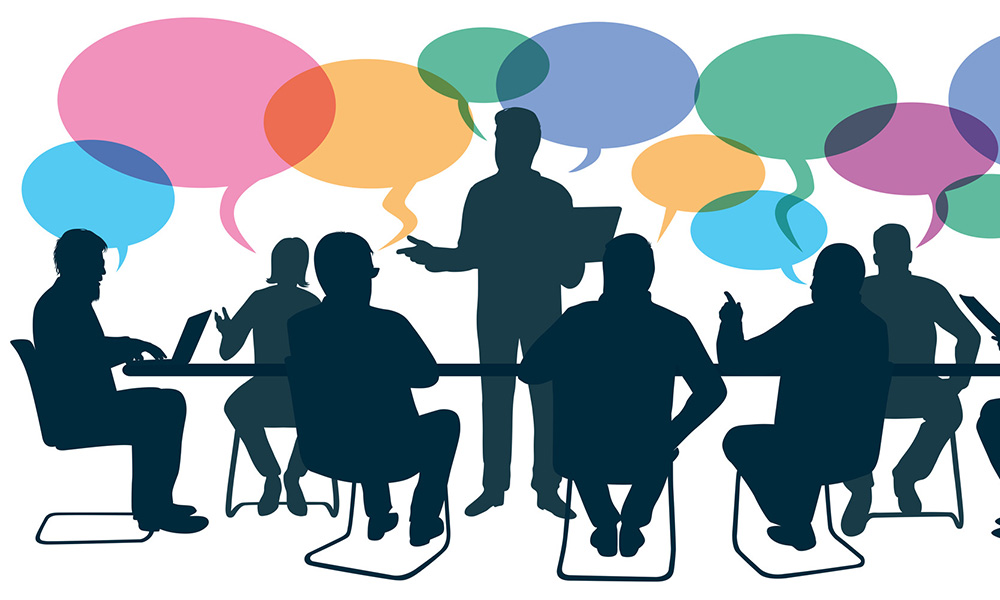I try to read a lot, usually multiple books or articles at the same time. Lately, however, I’ve felt that I’ve been skimming through the content. Like many of you, I’ve been inundated with information from books, articles, white papers, videos, podcasts, and social media. My ability to read deeply seemed to be eroding in an age of distraction until I decided to change my reading habits.
Most of us recognise the importance of reading to become more effective leaders. However, the real value lies not just in reading extensively but in reading effectively. This involves intentionality in choosing what to read and how to engage with the material.
This week, my message focuses on reading better to become a better leader. Why should you make the effort to develop more thoughtful reading habits? What kind of content should you consume — and avoid? How can you make the most of your reading experience?
Perhaps no other single activity offers so many benefits for leaders. Among other things, a well-developed reading habit:
- Elevates thinking. Not only does reading high-quality content connect you with new information and ideas, but it also upgrades your thinking. Readers have stronger problem-solving and judgment skills and can spot patterns by linking seemingly disparate ideas. These are all vital skills for leaders in an increasingly complex world.
- Supports communication. A diverse reading habit widens vocabulary, which in turn enriches your speaking and writing skills. With a greater choice of words at your disposal, your communication becomes more precise, persuasive and effective. You are also equipped with more facts, frameworks and anecdotes to support your message.
- Cultivates empathy. Reading, especially novels, autobiographies and personal essays, gives us the chance to walk in someone else’s shoes. As we see the world through the character’s eyes, we start relating to them despite barriers of distance and difference. This boosts our emotional intelligence, which in turn allows us to better empathize and connect with people around us.
- Enhances decision-making. Leaders are faced with moral dilemmas and tough calls on a regular basis. Reading can serve as a valuable source of insight and understanding, both through fictional stories as well as real-world reflections. Learning how others grapple with challenging situations expands the imagination and brings nuance, thereby enhancing our decision-making abilities.
- Enables relaxation. Just six minutes into reading, your heart rate slows down and tension begins to dissipate. The stressbusting effects are similar to music and walking. This is why many leaders like to begin or end their day with a reading ritual. It doesn’t really matter what you read to relax, as long as it’s engaging and immersive.
What to read
Make conscious choices of what you put into your head. While it can be helpful to turn to certain books, journals and articles to learn more about a specific topic, the larger goal is to engage regularly with a wide range of materials to build your mental and emotional capacities.
Here are five pointers to keep in mind as you curate your to-read list:
1. Challenge yourself.
Read tough, demanding books that make you think and struggle. This is how learning happens. As an article on Farnam Street explains:
Learning something insightful requires mental work. It’s uncomfortable. If it doesn’t hurt, you’re not learning. You need to find writers who are more knowledgeable on a particular subject than yourself. By narrowing the gap between the author and yourself, you get smarter.
2. Don’t ignore simple ideas.
A solid grasp of basic concepts creates the foundation you need to navigate more complex topics. You can also acquire simple mental models from different disciplines. These frameworks generally translate across topics, offering you access to multiple ways of processing information.
3. Venture off the beaten path.
As Haruki Murakami observes in his novel, Norwegian Wood:
If you only read the books that everyone else is reading, you can only think what everyone else is thinking.
The ability to think differently holds immense value for leaders. Go beyond the bestseller lists and the well-known titles recommended by anyone and everyone. Dig deeper: explore different time periods, genres, cultures and topics. Pick up what nobody else is reading or talking about — you might be pleasantly surprised by what you find!
4. Look to the past.
Older books are a great source of time-tested ideas. According to the Lindy Effect theory, the older something is, the longer it’s likely to be around in the future. If a book has been in print for a couple of centuries, chances are it holds high-value, evergreen insights. Almost every culture has its own classics, providing a readymade treasure trove for readers.
5. Protect your reading time.
It’s also important to think about what not to read. Given our tightly packed schedules, every hour we waste on mediocre content has a high opportunity cost. Not to mention the negative effect on our minds. In the words of German philosopher Arthur Schopenhauer:
Bad books are intellectual poison; they destroy the mind.
Avoid content that bombards you with unnecessary jargon — without really stimulating the mind or saying anything meaningful. The same goes for gimmicky authors who promise overnight, too-good-to-be-true solutions to tough, messy challenges. This type of writing portrays a shallow, simplistic and skewed view of the world, which doesn’t align with reality.
How to read
How you read matters as much as what you read. Try these 5 techniques to read more effectively:
1. Engage deliberately.
In his piece on Medium, Captain Raghu Raman asks a very pertinent question:
What kind of reading — is reading? In an age of social media, everyone is ‘reading’ all the time. Or at least staring at their phones, getting tickled by new posts, tweets or messages every few seconds.
I don’t mean that kind of reading. I mean the more in-depth reading, that immerses us into a subject or an experience, that teaches us, kindles our emotions, inspires us and is a beacon in our leadership journey.
Simply reading book after book, article after article, doesn’t automatically create knowledge and wisdom. For that, we must reflect and ponder, digest and synthesize. This is the main difference between reading for entertainment and reading for understanding.
When it comes to fiction, you can interact with stories by asking questions and introspecting. In her Harvard Business Review article, Brooke Olson Vuckovic (a Professor of Leadership at the Kellogg School of Management) makes a few suggestions:
- Consider each central character, asking, what do these characters have to teach me?
- Whom and/or what elements of this story do I find easiest to relate to? Hardest?
- Map the conflicts in the story. How are the characters addressing or avoiding them at different times and to what end?
- How might I advise characters as they navigate moral ambiguity?
- How might this work apply to real-life situations I face?
2. Discuss and share insights:
Engage in discussions about what you’ve read with your team members, peers, or mentors. Consider joining a book club (or take the initiative to create one at work). I make it a point to gift any book that has deeply impacted me to my team members or friends who might benefit from the book. That way, I get the chance to discuss the book with them. Sharing insights reinforces your understanding and fosters a culture of learning from each other.
3. Set aside dedicated time:
Integrating reading into your daily routine can be challenging but essential. Setting aside dedicated time each day, even if it’s just 30 minutes, whether early in the morning, during lunch breaks, or before bed can establish a consistent reading habit.
4. Re-read.
Mortimer Adler, best known for his work on the Great Books program at Encyclopedia Britannica, offers the following advice:
Any kind of important book should immediately be read twice, partly because one grasps the matter in its entirety the second time, and only really understands the beginning when the end is known; and partly because in reading it the second time one’s temper and mood are different, so that one gets another impression; it may be that one sees the matter in another light.
Adler identifies four levels of reading:
- Elementary reading: basic, mechanical reading.
- Inspectional reading: skimming or superficial reading. This gives you the gist and helps you decide if the text merits a more intentional read.
- Analytical reading: thorough, interactive reading. This gives you a strong understanding of the text and the author’s intent, and helps you develop your own views.
- Syntopical reading: in-depth reading of multiple books on the same subject. By comparing and contrasting the texts, you become proficient in the field.
For most articles and books, a combination of inspectional and analytical reading works well. If you wish to delve deeply into a particular field, then syntopical reading is the best way forward.
5. Take notes.
Write your thoughts in the margins, jot down observations in a diary, or create one-page “mind maps” for important books. To support recall and fluency, review your notes after a few weeks or months. This will help you better grasp and retain what you read.
Reclaiming the art of intentional, focused reading is essential for developing the insights and skills that effective leadership demands today. By choosing the right material and engaging with it in a purposeful way, you can continuously grow, unlock a wealth of knowledge, foster innovative thinking, and cultivate deeper empathy. So, why not make a commitment to read more and read better?








Comments